Dennis Deery
Ukraine? In winter? I think I spent two months explaining to everyone who heard about it just why I was going to Ukraine on vacation over the holidays. But I had a good reason. My wife Kathleen is stationed there as a Peace Corps Response Volunteer. Peace Corps Response recruits experienced professionals with specific technical skills to provide short term (6mos – 1 year) support to a community in need. Kathleen left for Ukraine in early September last year and is completing a nine month project at the Ternopil Regional Center on Education and Rehabilitation, a school for children with disabilities. She provides capacity building support to the school administrators and training to enhance the skills of the teachers. Of course, she also spends a lot of time with the children who attend school, many of whom live there during the week and travel home to their families in remote villages around the region on the weekend.
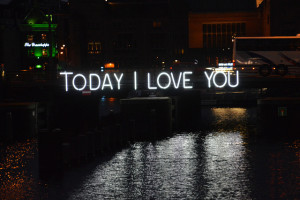
I knew going in this trip would be one of the most disorienting travel experiences I’d had to date. There were significant language challenges (including the алфавіт …er, alphabet), a wildly unfamiliar culture, and a very different standard of living (squat toilets anyone?). Nevertheless, I flew out on Christmas Day feeling less prepared than I ever have for a trip. Fortunately I had a 7-hour layover in Amsterdam, a city I’d visited before. I spent a quiet day exploring the town and slowly adjusting to an environment where I couldn’t read most of the signs or speak the language. However, nothing really prepares you for the post-Soviet experience of Ukraine. I arrived in Kiev (“Kyiv” to the locals) late in the evening, following the crowd and searching for signs in English that would guide me toward the exit. I cleared customs and immigration without a problem, carrying all sorts of ‘exotic’ items for Kathleen and other volunteers, such as Sriracha chili sauce and cheddar cheese. Fortunately no one seemed too interested in my luggage.
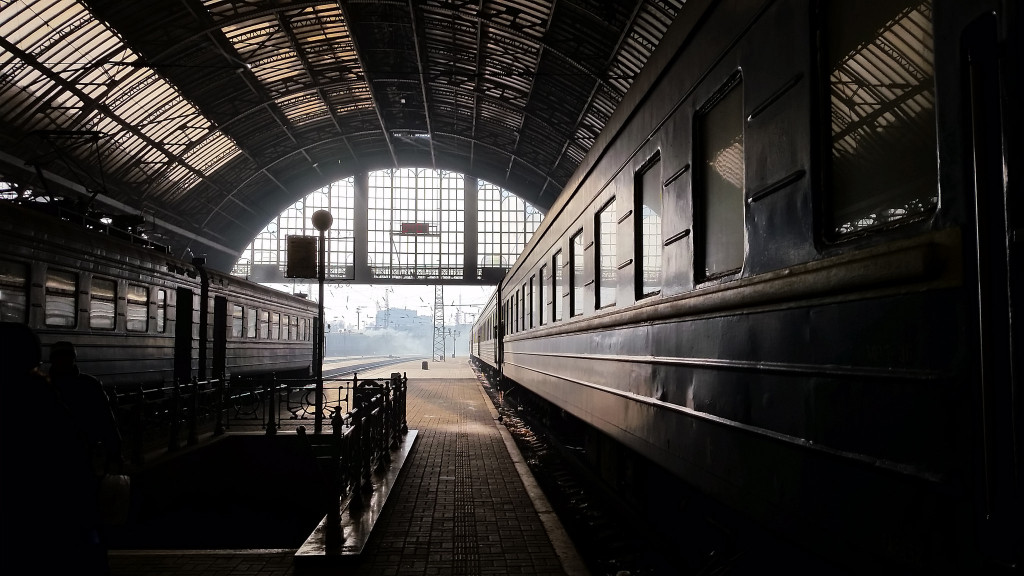
Airports are always hectic, and this one was no exception, even late at night. As I made my way outside I was inundated by cab drivers offering “clean car, very comfortable, very fast” in their limited English (prices quoted in Ukrainian), each one vying to land a paying customer. I worked my way through the crowd, and after a short wait happily found Kathleen and her friend Nataliya, who was kind enough to come along and help us navigate Kiev. We had just enough time for a car ride to the city center and a quick sandwich at the train station before hopping a night train for Ternopil, where Kathleen lives. Walking onto the train platform was like stepping into an old Cold War movie - one bare light bulb lighting the platform, and a train that had to be nearly as old as I am. We found our car and I climbed aboard, feeling well out of my element. We had space reserved in ‘second class’ which was a 4-bunk compartment, and already occupied by one person trying to sleep. We made up our beds as quietly as we could, and I hauled myself up to the top bunk, trying not to step on the person below, where I quickly fell asleep after 28 hours in transit.
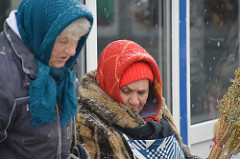
The train conductor was supposed to wake us up half an hour before we arrived in Ternopil, but had fallen asleep himself, so we scrambled to pull our things together as the train approached our station. We arrived to a cold and snowy platform about 2:00 am on Sunday, caught a taxi to Kathleen’s apartment (with help from Nataliya), and thankfully were able to get a few more hours sleep before venturing out into town. Ternopil is a proper city of about 200,000 people, located in the western part of Ukraine. While many Peace Corps volunteers are placed in rural villages with far fewer creature comforts, Kathleen was lucky enough to be given a post with easy access to coffee shops, public transportation, and Wi-Fi. However, it’s not a city like any you find in the US, as evidenced by the string of old women selling raw chickens and homemade yoghurt on the streets around the city center. The city is surrounded by a seemingly endless stretch of large concrete apartment buildings built in the Soviet era, each in its own individual state of decay. Drinking water is purchased at a local filling station located near each apartment complex or from one of the many small shops that line the main streets. People walk with their heads down, carefully watching the broken sidewalks and side-stepping the worst of the debris.
We explored the local bazaar, a large open-air market where you can buy everything from fresh produce to tools to kittens to underwear. Even washing machines! I got a taste of Ukrainian culture when Kathleen explained that she needed help buying a new shower head for her apartment. Shopping at the bazaar by herself was challenging because in addition to not knowing the language well, the male vendors often ignored her, especially in the hardware section of the bazaar. Gender issues are still very evident there. Afterwards, while we waited for our lunch to arrive - a traditional Ukrainian lunch of borscht and varenyky (beet soup and potato dumplings), Kathleen did her best to teach me essential survival words in Ukrainian (please, thank you, yes, no, hello, etc.). For the next two weeks I would sound like a broken record, repeating thank you (“dya-ku-yu”) over and over as people were gracious and kind in helping me navigate in unfamiliar territory.
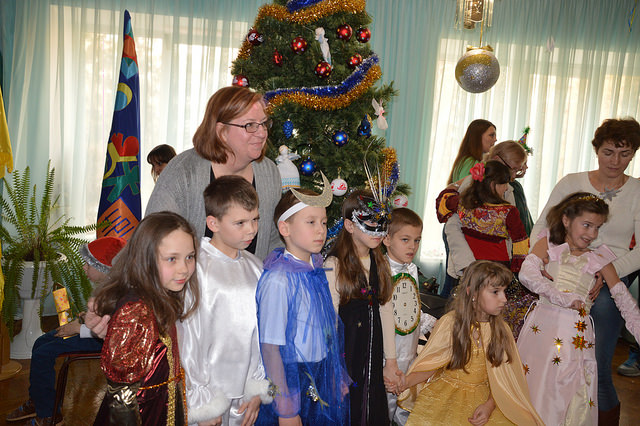
Monday and Tuesday were work days for Kathleen, so I tagged along and had a chance to meet her co-workers and many of the children. The school was winding down for the holidays, so both days were filled with Christmas programs; elementary-age children one day and the older kids the next. The Christmas programs would be familiar to any proud parent, with singing, dancing, and adorable costumes. The young children ended their program with a wonderful rendition of “We Wish You a Merry Christmas” in English just for us, beaming with pride as they sang. It was incredibly touching, and highlights the generosity of spirit of every person at the school.
The holiday season in Ukraine seems to go on for ages. Ukraine is dominated by two primary religions – Ukrainian Greek Catholic and Ukrainian Christian Orthodox. As each follows a different calendar, Christmas is celebrated both on December 25th (Catholic celebration) and January 7th (Orthodox celebration). In addition, New Year’s is celebrated much like Christmas is in the US, with a decorated tree and gifts and family gatherings. There is also Orthodox New Year or “Old New Year”, and Epiphany and several other days of celebration thrown in for good measure. January feels like an endless party in Ukraine. To celebrate the traditional New Year’s Eve on December 31st, we headed west to the city of Lviv, where we rendezvoused with three other Peace Corps volunteers.
Lviv is a beautiful old city, just two hours from the border with Poland and a popular tourist destination for Eastern Europeans. It was quite crowded for the New Year, so we fought our way through the crowds as we explored the Christmas Markets, sipping warm spiced wine and bartering for trinkets from the local sellers. We also relished a whole new range of foods, including dishes from Georgia and Uzbekistan.
We returned to Ternopil in time for the Orthodox Christmas holiday, since we had been invited to a traditional Christmas Eve with Kathleen’s friend Nataliya and her extended family. Nataliya is a very generous woman and in addition to us, she invited another woman who recently came to Ternopil as an IDP – an Internally Displaced Person who had recently lost her husband to fighting in the east and had to flee her home village as a result of the ongoing conflict. Nataliya volunteers in her free time to teach Ukrainian to Russian-speaking IDPs who have come to Ternopil so that they are better integrated in the local community and have higher prospects for employment.
The meal for the celebration consisted of 12 meatless dishes, one for each month of the year. While dishes can vary from table to table, nearly all Christmas meals in Ukraine begin with Kutia, a lightly sweetened cold soup made with wheat berries and poppy seeds. This was followed by homemade dumplings filled with cabbage and onions, pickled beets with horseradish, pickled mushrooms, dried fruit compote, various warm vegetable dishes, cold salads, and several varieties of herring. It was quite a culinary adventure! The meal was broken up by frequent rounds of toasts led by Nataliya’s father, the family patriarch. As the only other adult male at the table, it fell to me to drink shots of homemade brandy with him, while most of the other guests sipped wine. It is considered impolite to drink only half of the pour, so I dutifully knocked them back in a single swallow focusing on the warm glow in my belly rather than the burn at the back of my throat. I stopped counting after my eighth shot, although my drinking partner showed no signs of slowing down. As the evening wound down, Nataliya’s father brought out his guitar and played traditional Ukrainian Christmas and folk songs while everyone joined in. It was such a heartfelt and welcoming celebration, and we left that evening full to the brim of generosity and good food (and a container of dessert, which we were too full to finish). It definitely reminded me of the traveling and home stays I enjoyed with Leadership Wisconsin.
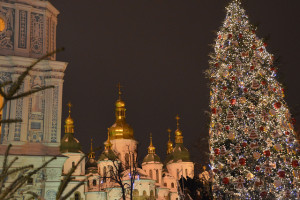
On Orthodox Christmas Day we took the train back to Kiev to spend a few days exploring the city before I flew for home. Kiev is the capital of Ukraine and has a much more modern feel to it. However, being located closer to the east, it was also full of reminders that Ukraine is a country still very much at war. There were soldiers everywhere - many on holiday leave, but just as many on patrol, and others begging on the street, having been injured in the war. We saw multiple memorials to the fallen, both military and civilian. We visited Maidan Square in central Kiev, the site of protests and violent clashes in 2013-2014 when the Ukrainian government was brought down by protesters.
Exploring Kiev was a treat for Kathleen as well. She had previously been prohibited by the Peace Corps from traveling to Kiev because of political instability and ongoing security concerns. Prior to the war with Russia, Ukraine had been home to more than 200 Peace Corps volunteers, all of whom were evacuated in early 2014 at the height of the conflict. Kathleen was part of the early returning volunteers in 2015, but the Peace Corps is still very careful about protecting volunteers and has restricted travel to the eastern half of the country. Thankfully things had settled down enough that the prohibition on travel to Kiev had been lifted just before my arrival, and we were able to visit the ancient churches and museums and stroll through the many city parks of the city.
We had a great time exploring new places and playing “tourist” while I was in Ukraine. But the best part of the trip was, of course, spending time with Kathleen and being able to share in her experience. She left her position as a tenured professor in the UW system and decided to spend a year volunteering with the Peace Corps before finding a ‘regular’ job again. She says it is scary to give up the comforts and security of home, but that the benefits far outweigh the costs. And seeing the looks on the children’s faces when she walks into school is proof enough that there are more important things in this world than comfort.
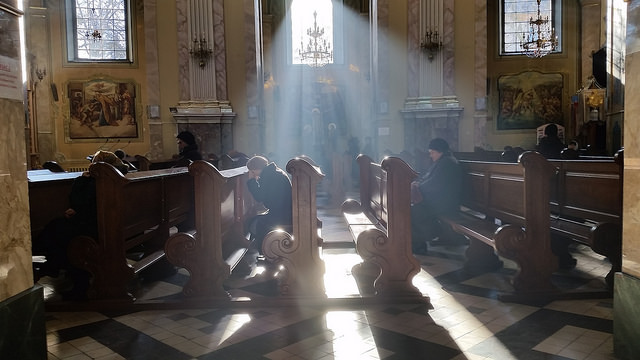
It was wonderful to get a chance to dip my toe into regular, day-to-day life in Ukraine. People are incredibly welcoming and generous. The kids at school light up and high-five Kathleen, eagerly playing with her even when they don’t share a language. Families open up their homes and welcome visitors as if they are old friends. Everywhere we went we saw people sharing everything they have, no matter how meager their means. The average school teacher in Ukraine earns just $150 US per month, which is barely enough to pay the rent. Still, there is a level of hospitality and caring that makes them seem far richer than those with an excess of material goods.
Ukraine is a country wracked by poverty and political strife, but it is also filled with people working hard to change that. One of these people is Kathleen’s colleague and mentor, Bohdan Yarema, who volunteers his time to support community development projects and promote youth leadership through international exchange. In fact, he visited Wisconsin in 2014 as part of leadership delegation to share ideas and talk about social justice. Peace Corps-Ukraine and organizations like Open World are making a difference in Ukraine and elsewhere, one visit at a time. Even a country struggling with war and poverty recognizes that the way forward requires an investment in the country’s future leaders. We as a society would do well to learn from their example.
You can see more pics in my online album here.